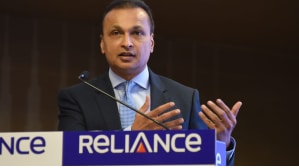Based on how the Indian digital landscape is shaping itself, the Digital Competition Act will play a critical role. According to the Committee on Digital Competition Law report, India comprises over 759 million active Internet users and has become a hub for large digital market sectors such as retail, healthcare, and financial services. In that context, the report has upheld the need for developing a ‘broad consensus and understanding among different stakeholders’, along with creating a framework for ensuring fairness with regard to central Indian digital services. “Digital Competition Law, referred to as antitrust law in the digital age, is considered a crucial component in the new age of technology as traditional antitrust frameworks are considered to be struggling to address challenges posed by digital platforms. I think a key aspect of Digital Competition Law is ensuring a level playing field for all market participants, including smaller businesses and startups, to monopolistic behaviour,” Gaurav Sahay, practice head – technology and general corporate, Fox Mandal & Associates, an Indian law firm, told FE TransformX.
The report has emphasised on the Competition Act, 2002, which intends to prohibit practices that negatively affect India’s commercial landscape, and how it was outlined without anticipating the pace of digitalisation being witnessed in today’s world. As per Statista, a global data and business intelligence platform, India’s digital commerce market value should clock $211.3 billion in 2024 and $319.3 billion by 2028, at a 10.87% compound annual growth rate (CAGR) for 2024-28. The digital economy and its percentage in the total economy of India was three percent and 3.5 % in 2014 and was 10% in 2023, and it is expected by 2026, the number will reach almost 20% of India’s GDP. The report stated that in the last couple of years, the scale of digitalisation in India saw an upward trend on account of Internet availability. Insights from a Ministry of Electronics and Information Technology (MeitY) study, done in 2019, predicted India’s digital economy to clock $500 billion by 2025. The study also highlighted India’s digital economy potential to achieve one trillion dollars over policy initiatives, encompassing 30 digital topics under nine national goals.
Furthermore, the report highlighted anti-competitive drawbacks caused by large digital organisations, and how they have been brought forward in front of the Competition Commission of India (CCI). The Standing Committee Report recognised ten anti-competitive practices (ACPs) by large digital organisations and studied the requirements for bettering India’s competition framework. The Standing Committee Report has taken into account network implications and increasing returns on scale for understanding their impact on digital markets. Instead of going for an ex-post way for handling ACPs in digital markets, the Standing Committee Report suggested the need for an ex-ante approach, along with the need to have a ‘Digital Competition Act’. ‘Following the Standing Committee Report’s recommendation, the Ministry of Corporate Affairs constituted the Committee on Digital Competition Law (Committee) to inter alia review whether existing provisions in the Competition Act are sufficient to address the challenges in the digital economy and to examine whether an ex-ante digital competition law is required,’ the report added.
As far as recommendations are concerned, the Committee gave nine of them, with emphasis being laid on a regulatory approach towards avoidance of anti-competitive practices. Reportedly, the recommendations include introduction of Digital Competition Act with ex-ante measures, which would mainly be applied for large digital enterprises for supplementing the Competition Act, scope and applicability, which would propose the Draft DCB being utilised towards a Core Digital Services list that are prone to concentration, regulation of digital enterprises with ‘significant presence’, which would ensure the Draft DCB’s applicability for digital corporations with a ‘significant presence’ in terms of Core Digital Service in India and can impact the Indian digital market, thresholds and criteria for designation as SSDEs, which would be based on the ‘significant financial strength’ test over economic power and the ‘significant spread’ test for an enterprise’s presence in the provision of Core Digital Service in India, associate digital enterprises, which would enable CCI to have flexibility in identifying enterprises for SSDE and ADE designations, obligations, which would ensure ex-ante obligations under the Draft DCB, exemptions, which would ensure that exceptions from following ex-ante obligations are present in the statute itself, enforcement, which would ensure the procedural framework’s borrowing from the Competition Act for the Draft DCB reasons, on account of enforcement of both these laws remain entrusted with the CCI, and remedies, which would enforce that a monetary penalty for non-compliance with ex-ante obligations remain not more than 10% of the global turnover of the SSDE in line with the penalty regime under the Competition Act.








